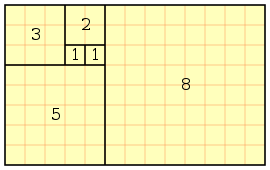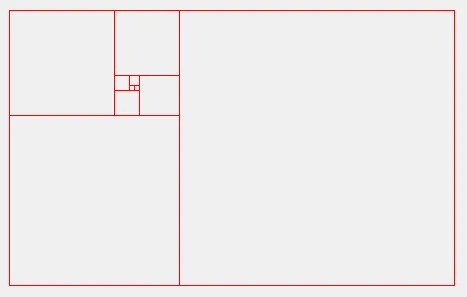我知道在Stack Overflow和网络上有很多关于斐波那契问题的问答,但这是一个困扰我已久的问题,我似乎无法解决或找到解决方案。
创建斐波那契算法足够容易,有很多方法,但我正在尝试使用C#以螺旋形式图形化地创建盒子。这不是为了大学或其他任何事情,只是一个问题,我已经花费了太多时间,现在需要找到解决方案,如果你知道我的意思?
以下是我目前所拥有的内容,我曾经有更好的配置,但在反复修订代码数小时后,这就是我目前拥有的:
创建斐波那契算法足够容易,有很多方法,但我正在尝试使用C#以螺旋形式图形化地创建盒子。这不是为了大学或其他任何事情,只是一个问题,我已经花费了太多时间,现在需要找到解决方案,如果你知道我的意思?
以下是我目前所拥有的内容,我曾经有更好的配置,但在反复修订代码数小时后,这就是我目前拥有的:
public partial class Form1 : Form
{
public const int FIBNUM = 6;
public const int CENTRE = 10;
public const int SIZE = 10;
public const int OFFSET = 100;
public Form1()
{
InitializeComponent();
drawSpiral();
}
private int fib(int n)
{
switch (n)
{
case 0:
return 0;
case 1:
return 1;
default:
return fib(n - 1) + fib(n - 2);
}
}
private void drawSpiral()
{
if (pictureBox1.Image == null)
{
pictureBox1.Image = new Bitmap(pictureBox1.Width, pictureBox1.Height);
}
using (Graphics g = Graphics.FromImage(pictureBox1.Image))
{
Rectangle r = new Rectangle(0, 0, 0, 0);
int fibnum = 0;
int centre = 0;
int size = 0;
int cnt = 0;
for (int n = 1; n <= FIBNUM; n++)
{
fibnum = fib(n);
centre = fibnum * CENTRE;
size = fibnum * SIZE;
++cnt;
if (cnt == 1)
{
if (n == 1)
{
r = new Rectangle(fibnum + OFFSET, fibnum + OFFSET, size, size);
g.DrawRectangle(Pens.Red, r);
r = new Rectangle((fibnum + size) + OFFSET, fibnum + OFFSET, size, size);
g.DrawRectangle(Pens.Purple, r);
n++;
}
else
{
r = new Rectangle((centre - size) + OFFSET, (centre - size) + OFFSET, size, size);
g.DrawRectangle(Pens.Black, r);
}
continue;
}
if(cnt == 2)
{
r = new Rectangle((fibnum) + OFFSET, (fibnum - size) + OFFSET, size, size);
g.DrawRectangle(Pens.Blue, r);
continue;
}
if (cnt == 3)
{
r = new Rectangle((fibnum - size) + OFFSET, (fibnum - size) + OFFSET, size, size);
g.DrawRectangle(Pens.Green, r);
continue;
}
if (cnt == 4)
{
r = new Rectangle((fibnum - size / 2) + OFFSET, (fibnum - size) + OFFSET, size, size);
g.DrawRectangle(Pens.Gray, r);
}
cnt = 0;
}
}
pictureBox1.Invalidate();
}
我从维基百科上获取了一张图像,这就是我试图以图形方式创建的内容:

提前感谢。

- 你实际的问题是什么?
- 如果这不是一个 UI 的问题,你能给我们一些可以运行的代码吗?
- asafrob